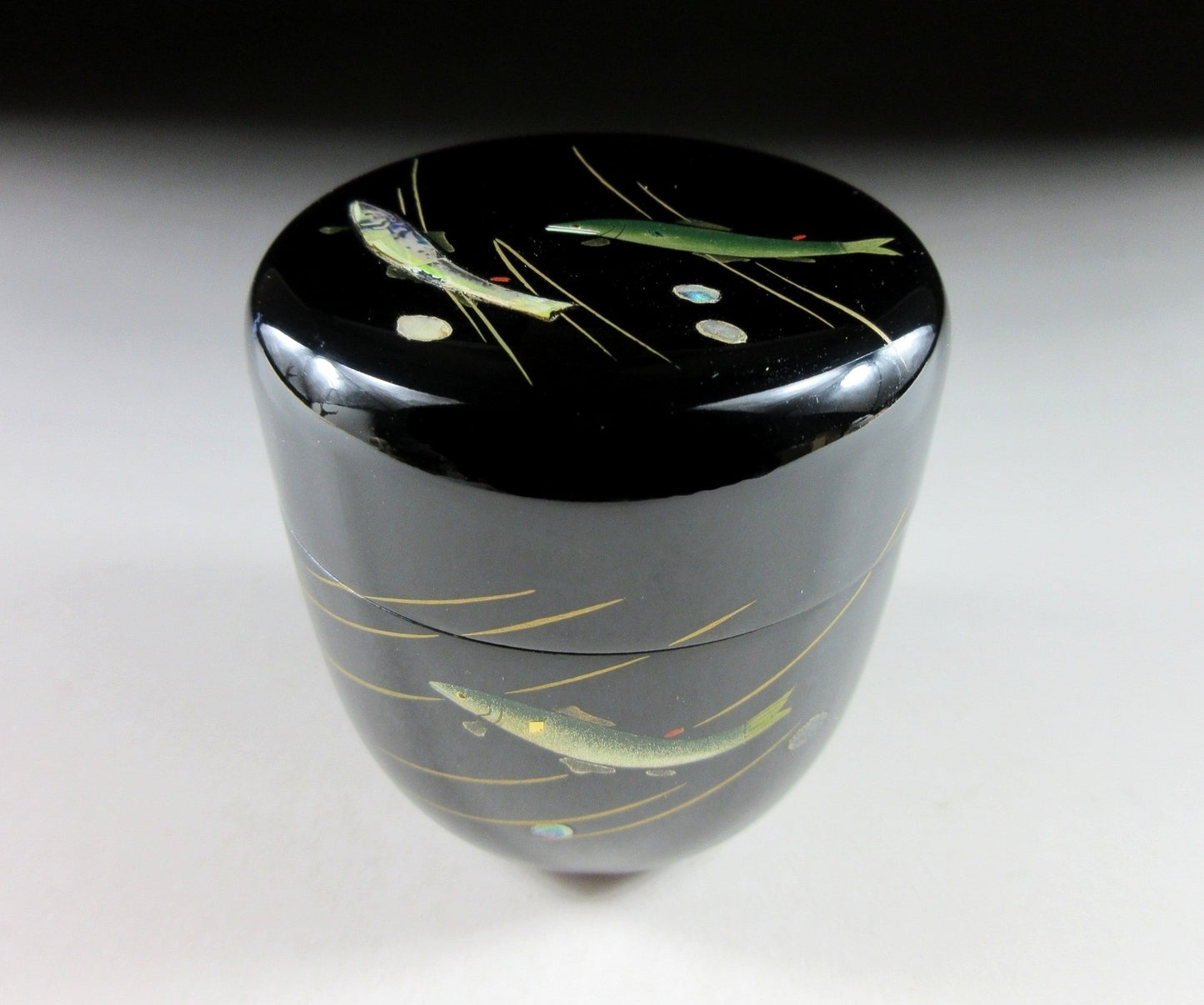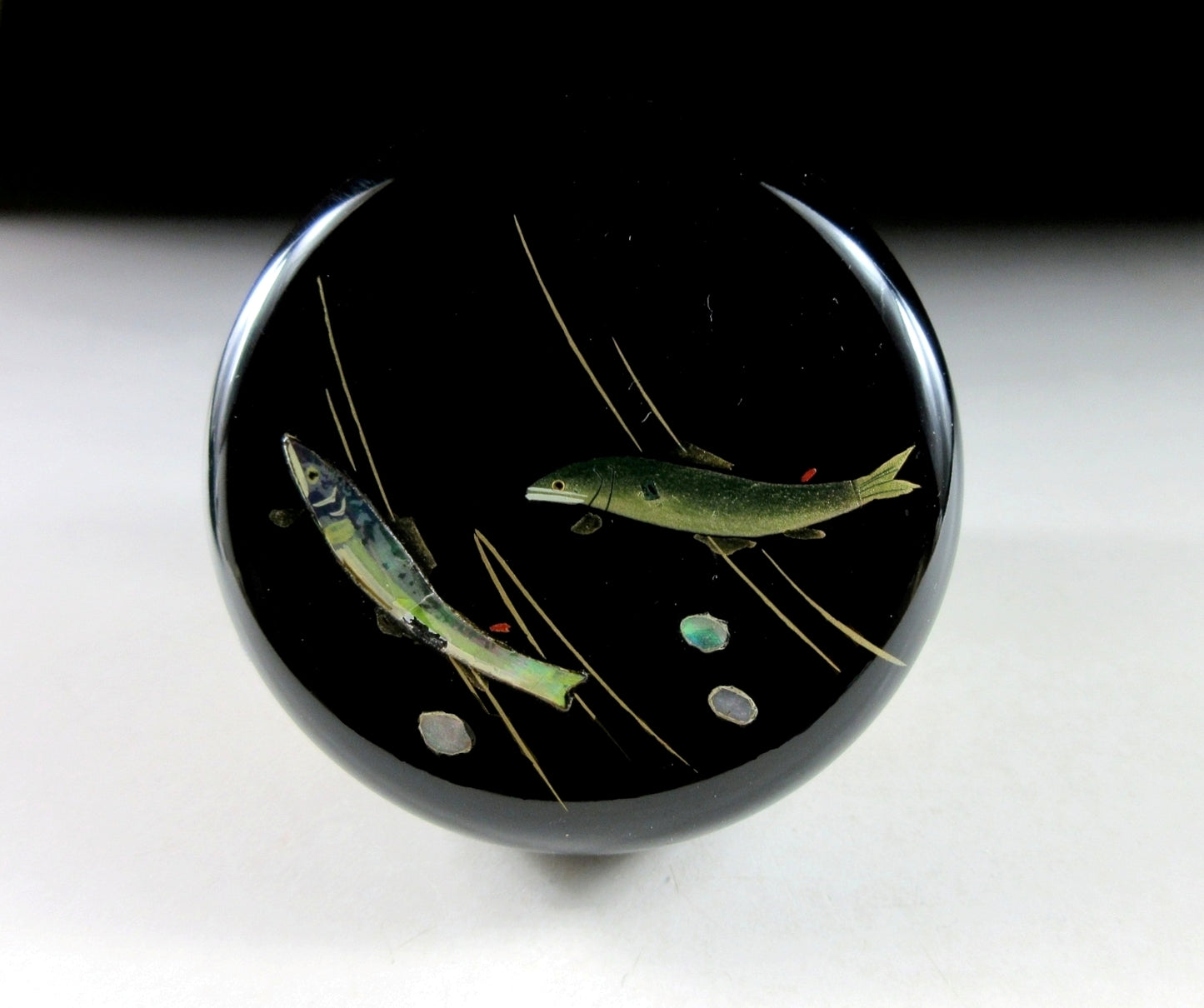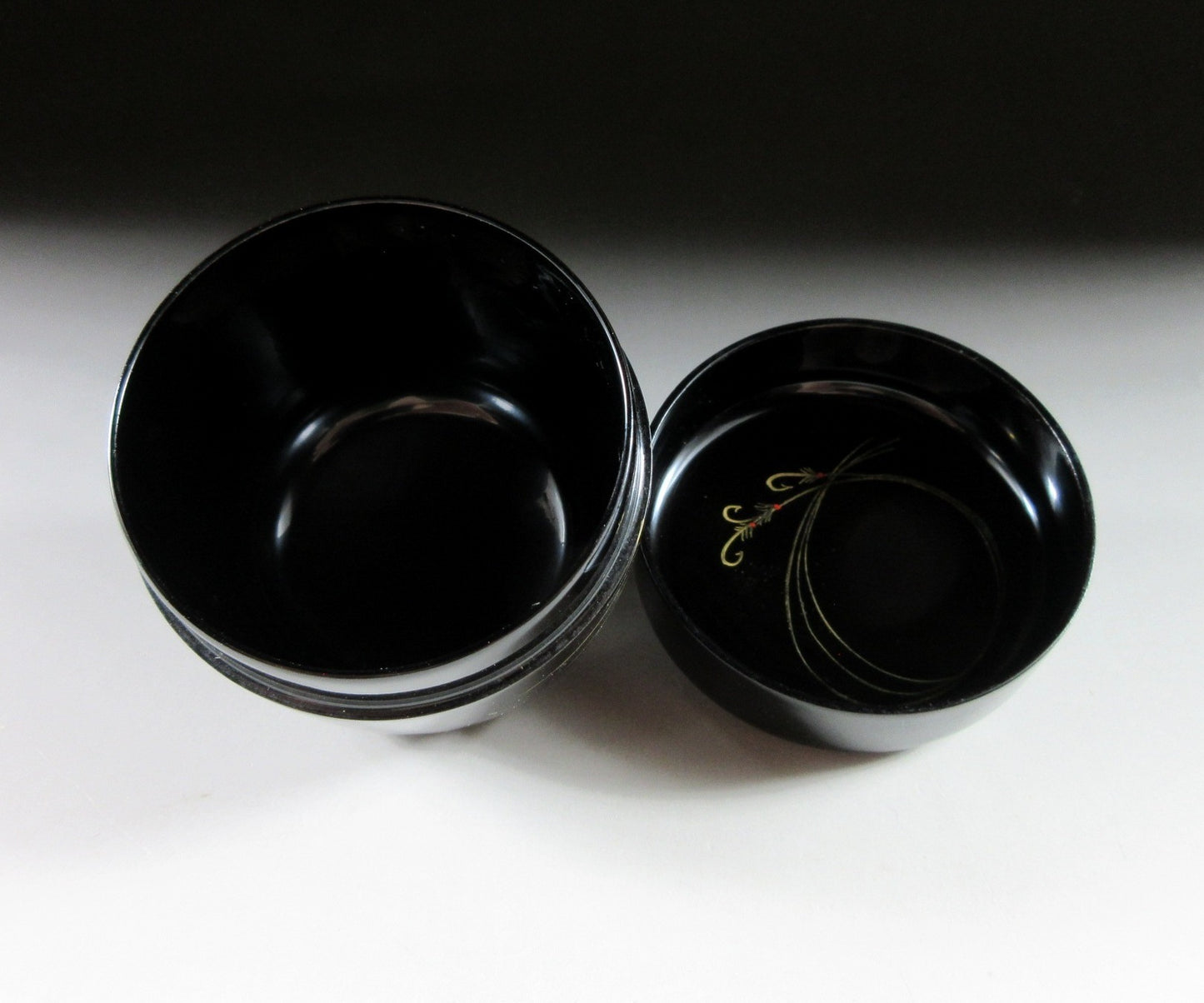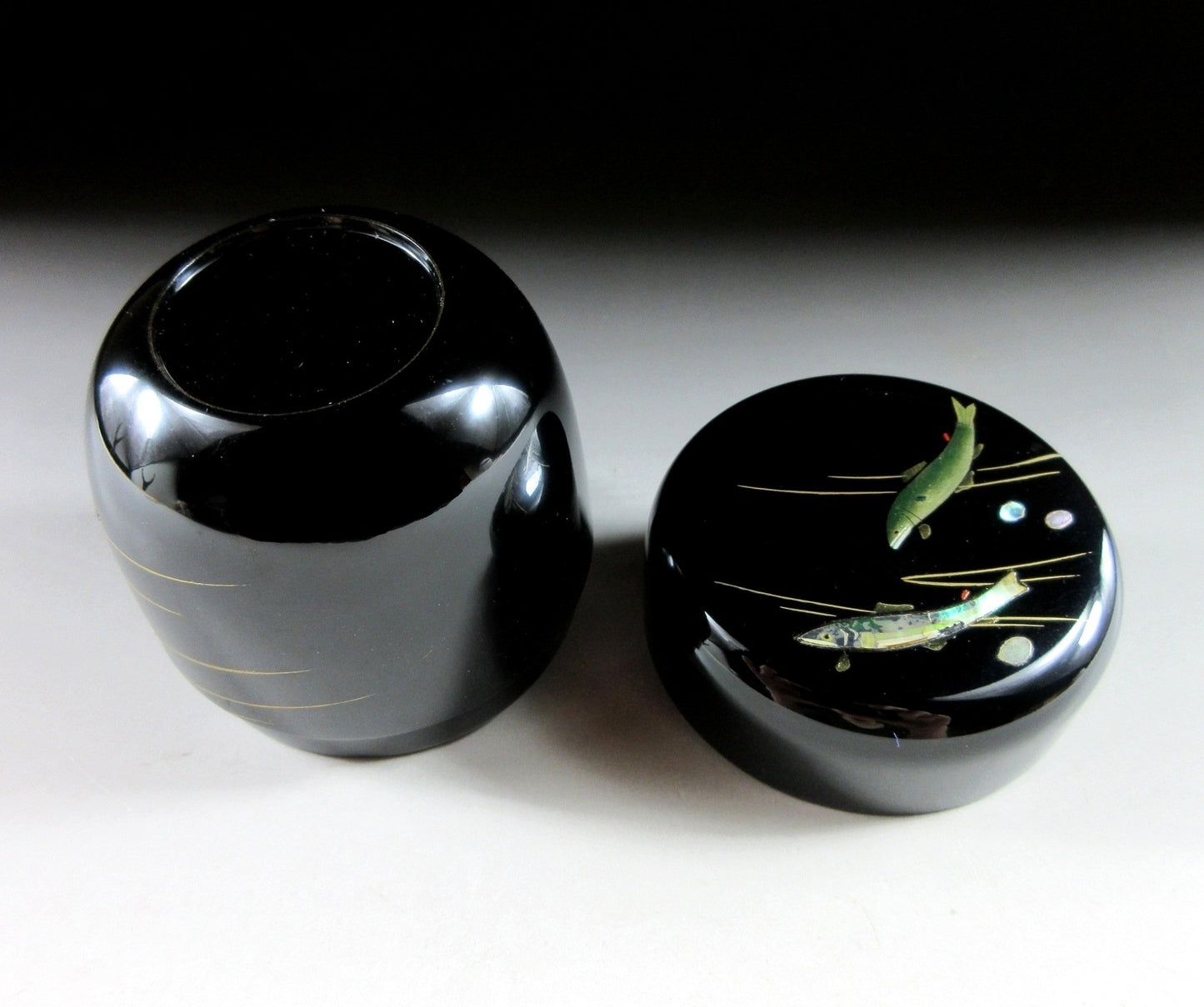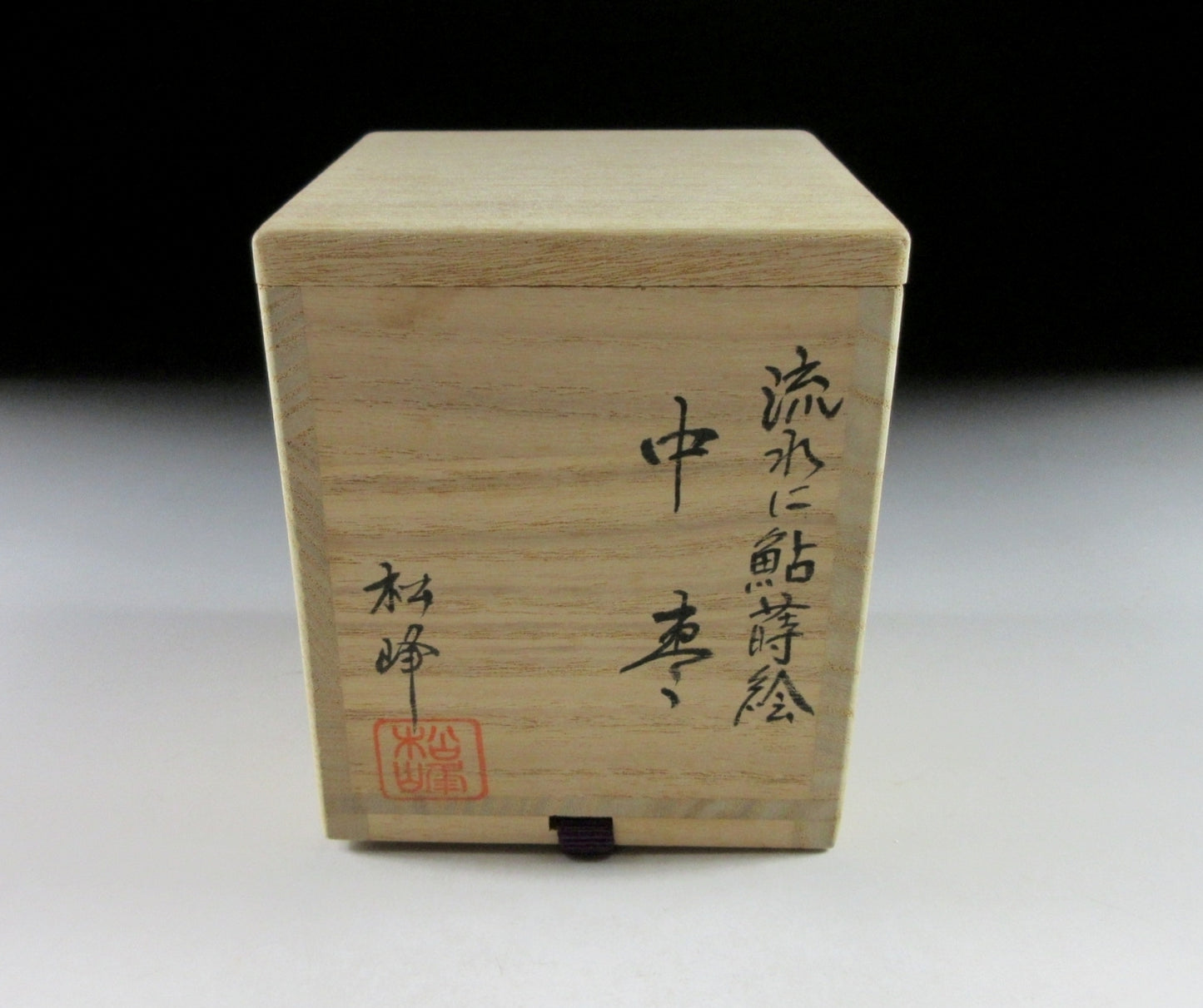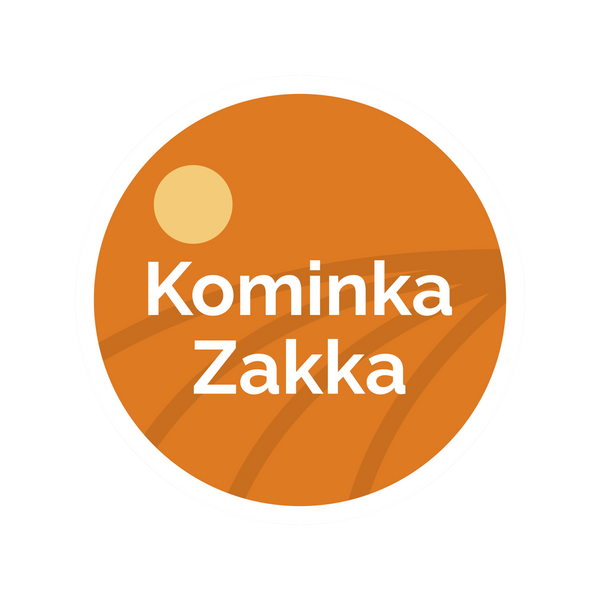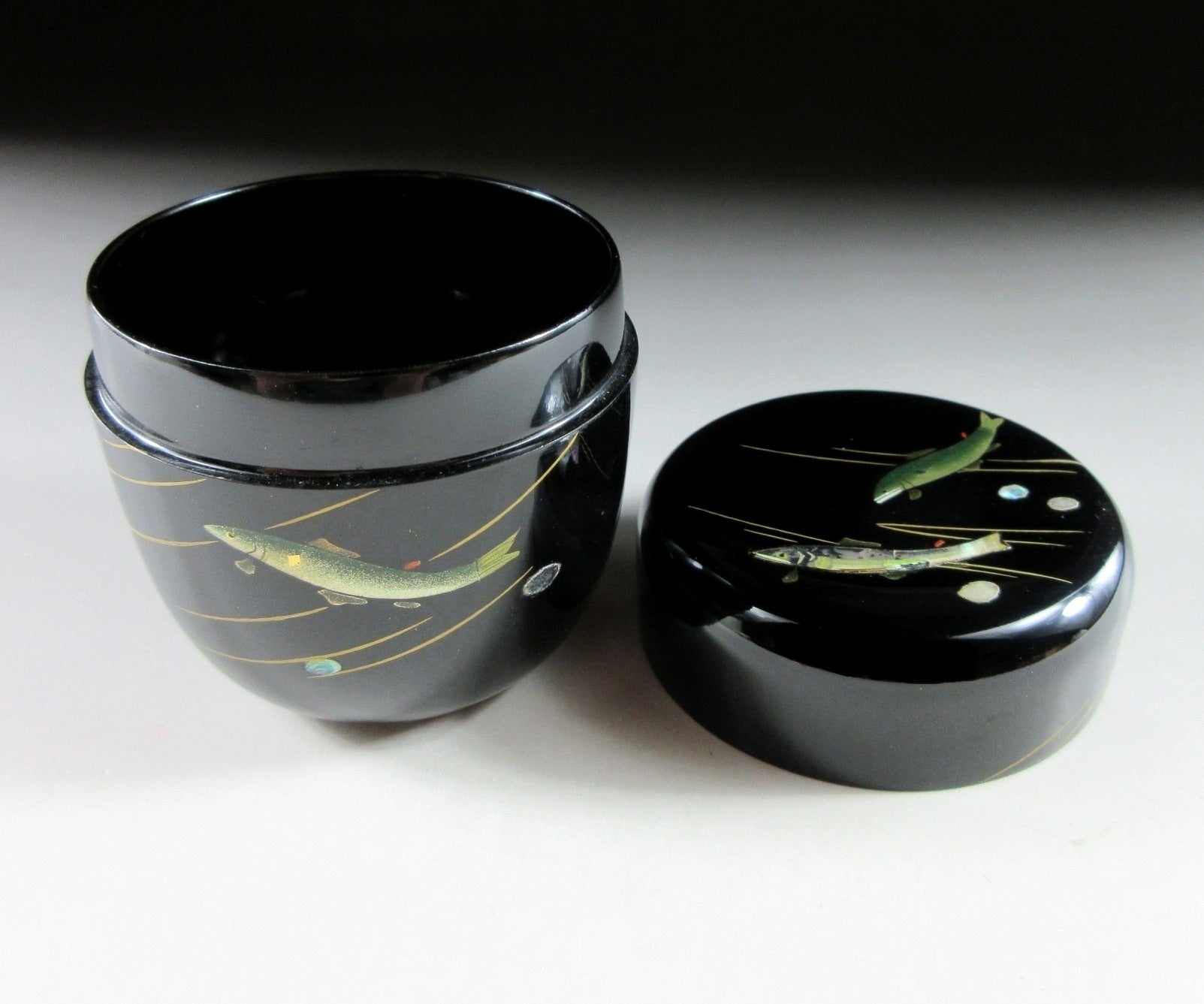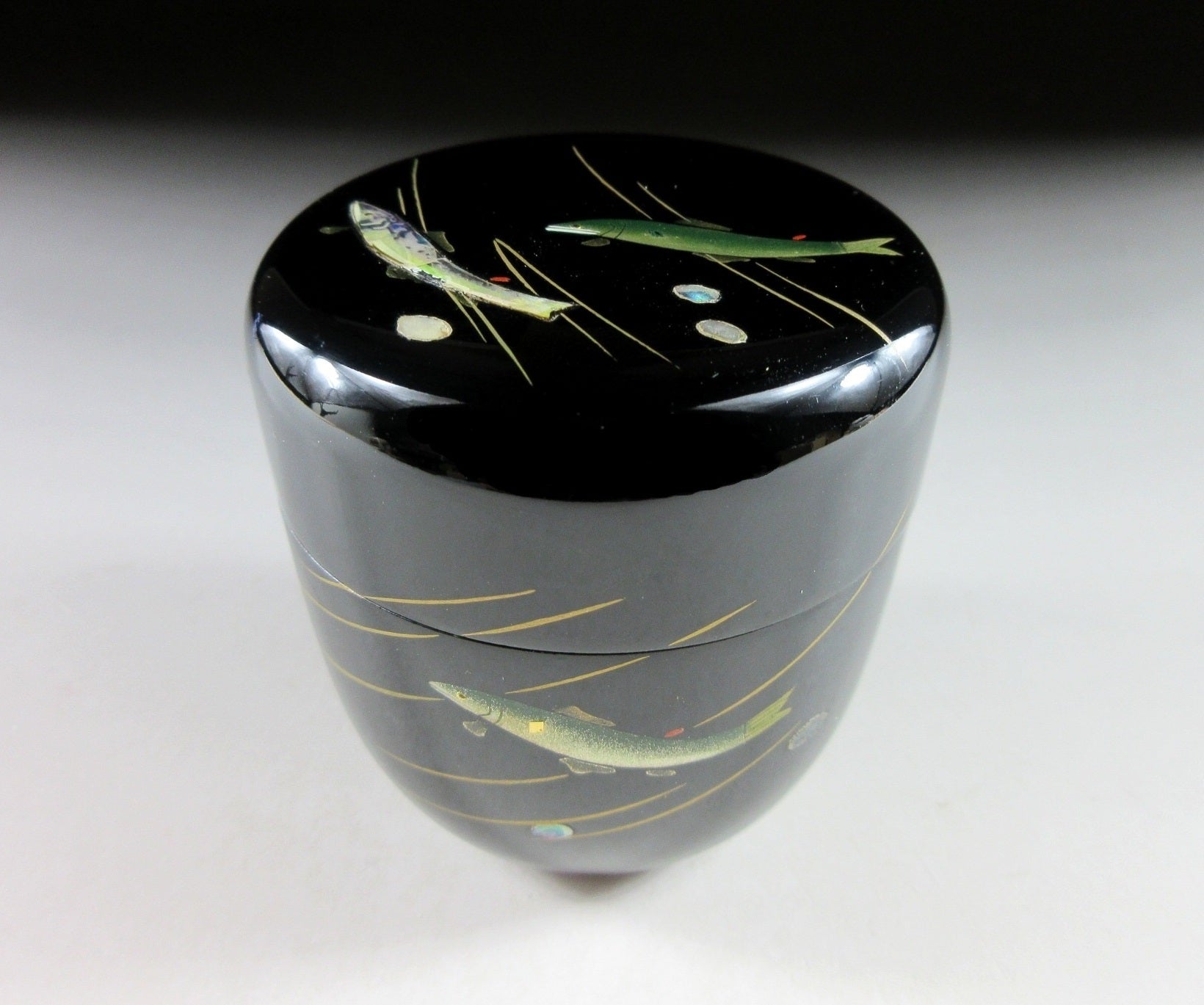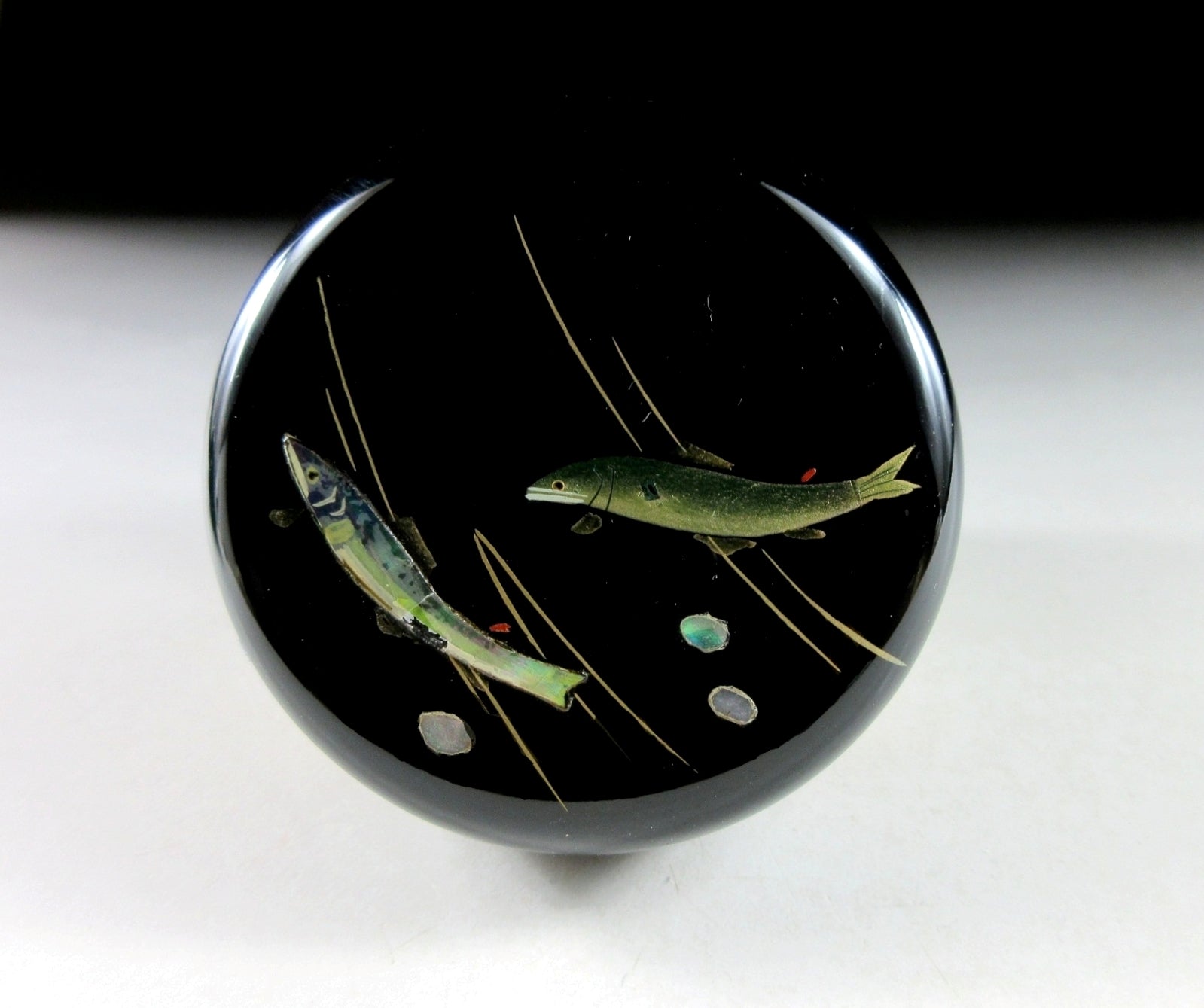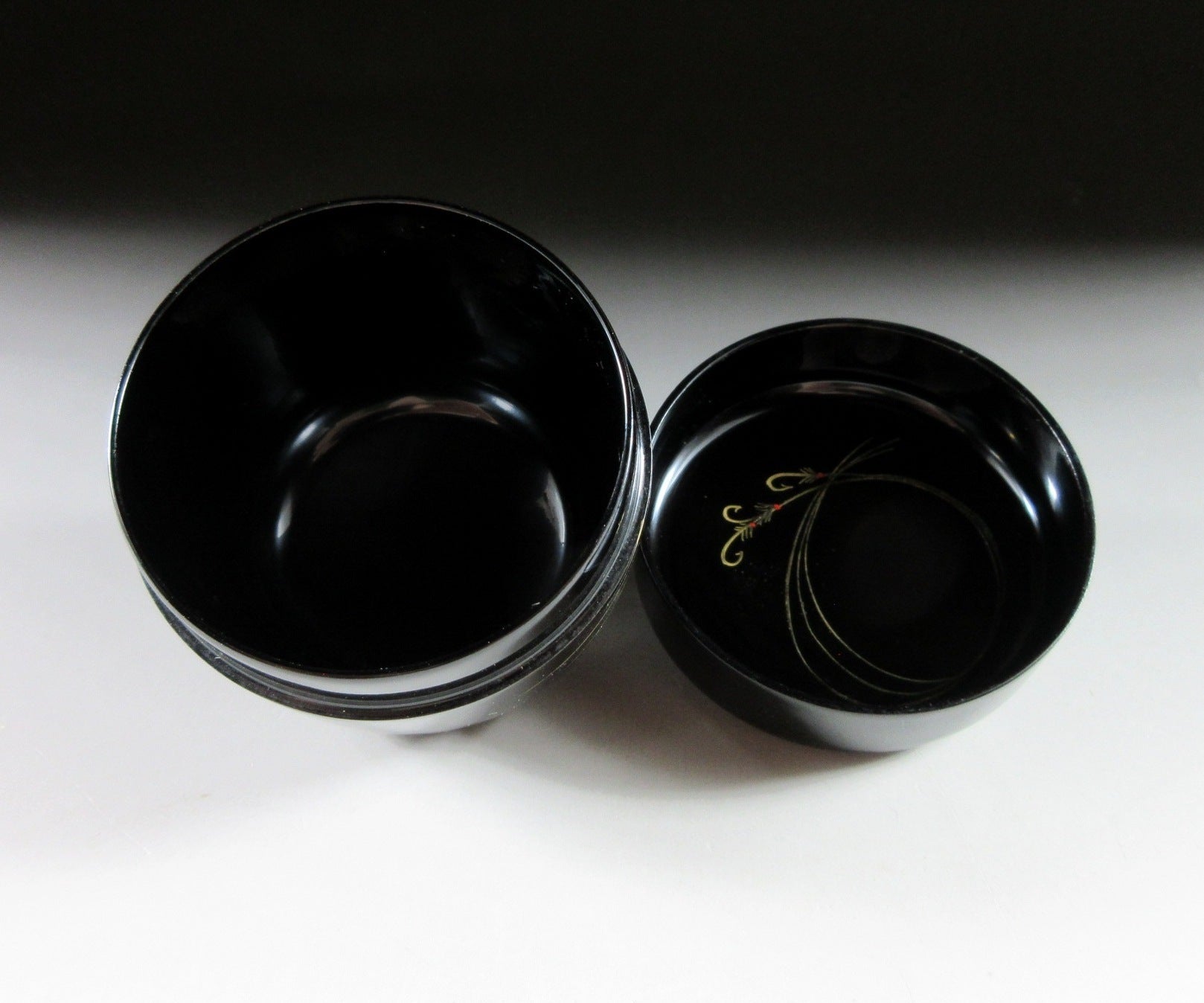Kominka Zakka
Nakade Shoho Echizen-nuri Natsume
Nakade Shoho Echizen-nuri Natsume
Couldn't load pickup availability
*SHIPPING OPTIONS VARY DEPENDING ON THE DESTINATION, PLEASE SCROLL TO THE END OF THIS LISTING FOR MORE DETAILS.
This listing is for a beautiful Echizen-nuri natsume made around 10 years ago by female lacquer artist, Nakade Shoho. It is made of wood coated in glossy black lacquer, and it’s decorated with makie ‘ayu’. Ayu refers to Japanese sweetfish, and in the oldest collection of Japanese waka poetry the word ayu is used to evoke a summer atmosphere. This is a lovely piece for summer tea practice. It comes with its original signed wooden storage box.
Nakade Shoho (b.1955) is a female Echizen-nuri lacquer artist in Sabae city, Fukui Prefecture. She began producing lacquer pieces in 1978 and studied under her husband, noted lacquer artist Nakade Zuiho. She specialises in making tea ceremony utensils such as natsume and kogo. Her work mainly features seasonal motifs and is popular among tea practitioners. **Fellow sellers, this information was researched by Kominka Zakka and CANNOT be used in your own listings.
Echizen-nuri lacquerware refers to lacquerware produced in Fukui Prefecture. History goes as far back as 1500 years ago when lacquer painters were tasked with repairing broken crowns of the imperial family. During the late Edo period, the makie technique was introduced from Kyoto, along with the skills of making gold inlaid lacquerware from Wajima. These days highly skilled artisans each perform different steps for completing one single piece of lacquerware. There are as many as 120 steps; and with the coating, drying, sanding, and re-coating it can take up to one year to complete just one piece. The wood most commonly used for Echizen wares is Japanese zelkova, Japanese cherry birch, Japanese horse-chestnut, and Japanese chestnut.
Makie refers to a crafting technique in Japan from presumably the Nara period. Craftsmen sprinkle gold or silver metal powder over successive layers of lacquer before it dries. Traditionally pure gold powder, pure gold flakes, and pure silver powder were used to complete motifs on lacquerware. The process of applying gold or silver powder requires both time and skill. At first the craftsman sketches out the design. He or she then adds charcoal powder to the base of the relief, and then a layer of urushi lacquer. Gold or silver powder is sprinkled over the wet lacquer, which acts as an adhesive. The surface is polished and then the process is repeated over and over until a beautiful raised pattern appears.
Sizes
Box: H.10.3cm (4”) x 8.6cm (3.3”) x 8.6cm (3.3”)
Natsume: H.6.6cm (2.5”) x Dia.6.7cm (2.6”)
Condition
It’s in very good condition aside from some minor marks on the interior, and some of the makie is a little worn from the fish decoration.
THESE ARE SHIPPING ESTIMATES BASED ON THE CURRENT GLOBAL SITUATION
**Germany, France, Greece, Spain, Poland, Austria, Slovakia, Lithuania, Slovenia: NO SHIPPING. Very strict and expensive packaging laws in place and we are not licensed to send products to these countries. We have no plan to register at this time because the process is in some cases very expensive and complicated, plus each country has its own set of regulations and application process.
**USA, UK, Canada, Australia, New Zealand, Switzerland, Norway: Airmail Small Packet (approx. 15-28 days). Combined shipping available up to 2kgs for Airmail Small Packet (please send us a message).
**Asia: Airmail Small Packet (approx. 15-21 days). Combined shipping available up to 2kgs for Airmail Small Packet (please send us a message).
**Central Asia, Middle East, South Africa, Brazil, Mexico: EMS Express 10-15 days.
**Russia: No shipping methods available.
Share

